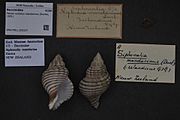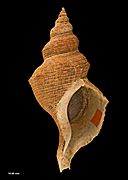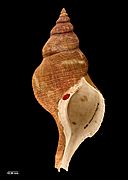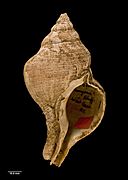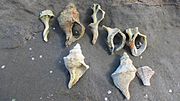Penion sulcatus facts for kids
Quick facts for kids Penion sulcatus |
|
|---|---|
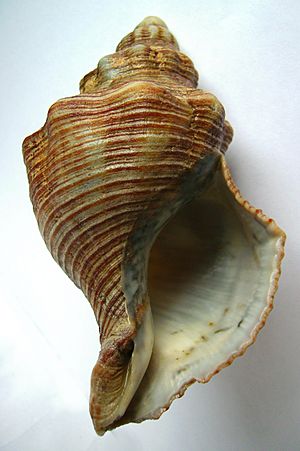 |
|
| Dorsal view of a shell of Penion sulcatus | |
| Scientific classification | |
| Kingdom: | |
| Phylum: | |
| Class: | |
| (unranked): |
clade Caenogastropoda
clade Hypsogastropoda clade Neogastropoda |
| Superfamily: |
Buccinoidea
|
| Family: | |
| Genus: |
Penion
|
| Species: |
P. sulcatus
|
| Binomial name | |
| Penion sulcatus (Lamarck, 1816)
|
|
| Synonyms | |
|
Fusus sulcatus Lamarck, 1816 |
|
Penion sulcatus is a type of medium to large sea snail, also known as a whelk. It is a predatory animal, meaning it hunts and eats other creatures. This snail is often called the northern siphon whelk or kākara nui in the Māori language. It belongs to the true whelk family called Buccinidae.
Contents
About the Northern Siphon Whelk
Penion sulcatus is a medium to large species of Penion siphon whelk. Its shell can look very different from one snail to another in terms of its patterns and colors. However, the shells are often dark with a white opening.
- Example shells
-
Shells fragments washed ashore at Hobbs Bay, Whangaparaoa
Where Penion sulcatus Lives
Penion sulcatus is found only in New Zealand. This means it is endemic to that country. You can find this snail along the coasts of the entire North Island and the northern part of the South Island. Scientists have also found many fossils of this species in the North Island, showing it has lived there for a long time.
These snails live on the seafloor, which is called being benthic. They are common in soft, muddy, or sandy areas on the continental shelf (the shallow part of the ocean floor near land). They also live in rocky areas just below the water's surface.
What Penion sulcatus Eats
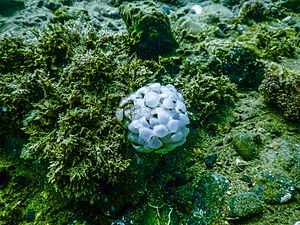
Penion sulcatus is a carnivore, which means it eats other animals. It is known to feed on mussels and another type of clam called Dosina zelandica zelandica.
How Humans Have Used Penion sulcatus
Long ago, Māori settlements often left behind piles of shells called middens. When archaeologists study these middens, they find shells of P. sulcatus. This suggests that Māori people likely collected these snails for food.
See also
 In Spanish: Penion sulcatus para niños
In Spanish: Penion sulcatus para niños


